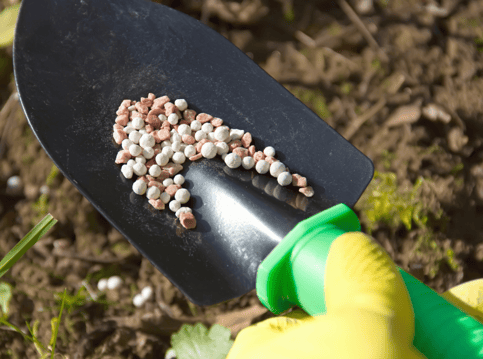
Home / Here on Earth / Basics of Lawn and Landscape Fertilization
If you want a lush and vibrant landscape, sometimes that means doing mother nature's job for her. Fertilization is a natural process that can be harnessed to maintain a healthy and green landscape. However understanding the chemistry, methodology, and reasoning behind fertilization isn't easy, so we put together a quick guide to cover the basics. Now while this guide can help, fertilizer should never be handled or applied by inexperienced non-professionals.
What is Fertilization?

Fertilization is adding essential nutrients to your plants. The three main chemical elements majorly found in fertilizers and that are mainly required for the nourishment of the lawn are:
- Nitrogen (N) - It stimulates chlorophyll production and promotes healthy leaf growth
- Phosphorous (P) - It helps in developing the stems, roots, fruits, and flowers
- Potassium (K) - It assists in digesting the other nutrients
Fertilization is essential for all kinds of plants as it provides them with the nutritional ingredients required to grow well and have a healthy life.
Why Fertilize, and Who Needs Fertilization?
In a lawn or a landscape, not all plants can access the essential nutrients they need just from your landscape. This means it is necessary to provide those nutrients directly to the plant. Your soil profile has a lot to do with your fertilization needs, so pay close attention to your unique profile before beginning. The soil texture, chemistry, or structure are affected by construction, traffic, and wear and tear. In many cases, nutrients would be leached out of the soil or are not present in the first place.
Regardless of your exact soil profile, fertilization is necessary for any landscape to preserve plant health and therefore maintain aesthetic.
How to Fertilize Safely?

You should not forget about the safety of the plants and the environment while using fertilizers. Many pets, young children, and even adults face health hazards due to fertilizers as they can irritate the respiratory organs, eyes, or even the skin. Thus it is essential to use fertilizers safely.
- You will have to first carefully read and understand the label to know when to apply fertilizers, how to use them, how long to apply them, and how much quantity to apply.
- After you apply the fertilizers, leave the plants untouched for 24 - 48 hours or as per the instructions on the label. Do not let any pregnant woman, children, or pet touch them.
- After you fertilize your lawn, water the lawn and let it dry completely so that the fertilizers break down and travel down to the roots.
- Over usage of fertilizers is harmful, so use a limited quantity of fertilizers and follow the instructions given on the label.
- The fertilizers must be pet-friendly.
- It is recommended to use organic fertilizer products.
Calling a Professional
While the above safety guidelines and introduction can help you understand why and how fertilization works, but that doesn't mean you're ready to fertilize your own landscape. As we've said, fertilizers being chemicals, they should only be handled by experienced and certified professionals. Down To Earth has teams of qualified and licensed fertilization technicians who are capable of serving your entire community, no matter the size.
Contact Down To Earth to speak with a fertilization expert and find out how you can bring your property to the next level.
